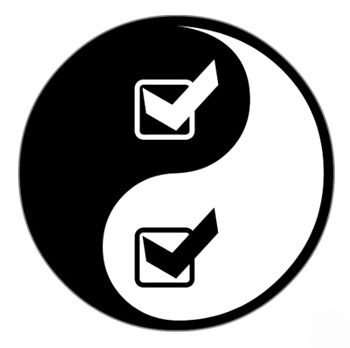On procedures and bureaucracy
Everyone knows a company must have procedures. Quality or no quality, but everything must be set in procedures and they must be followed. Bureaucracy. A sort of God’s will.
And if it’s Quality procedures we are talking about – so much the worse. A lot more annoying, too. Here come those bureaucrats from QA with their accursed paperwork…
So I thought we could take a look at what procedures actually are, and why they are needed.
And everyone who thinks that the purpose of an organization is to follow procedures – I may have a few surprised in store for you.

So, what exactly is a procedure?
Procedure is the written description of an organizational process we have defined. No more, no less.
– So what else is new? – you ask.
A little patience, please, even if nothing is very new yet.
The moment a company decides to set up a Quality Management system, enters the much renown ISO 9001 standard and suggests… Wait, what does it suggest, exactly?
It guides us to do a very simple thing, really: to identify the process which serves you in the best possible way (naturally, you must comply with the laws, regulations and technical standards, but there really is no need to discuss those here, is there?) and make sure everyone knows them in detail. Moreover, in the ISO 9001:2008 version there was a requirement for 6 written procedures, and in the ISO 9001:2015 version there is no longer any such requirement. You are not required to write down anything, if you don’t need it.
In addition, you are required to occasionally examine it to make sure it is still applicable; to improve it, when a chance presents itself. That’s it.
What do they mean by “process which serves you in the best possible way”?
It means a process which:
- brings you closer to your target;
- makes work simple and easy;
- is the most efficient for the operators;
- considers its suppliers and customers in the best possible way;
- creates the most clarity and simplicity;
- yields the best result;
- relies on the most logical work rules;
- is agreed upon by all who interconnect with it in any way.
In other words – a process creating harmony.
What if there is a problem with a procedure?
Now we are getting to the most important and fun part: every time we investigate a non-conformance or a process hitch; whenever a customer raises a complaint; when we conduct an internal audit; when a potential problem is discovered – we may find that:
- the procedure hasn’t been followed;
- the procedure doesn’t provide for such a case as this;
- the procedure misses something for the case in hand;
- the process has changed and the procedure is no longer applicable…
The fun part here is that when such are our findings, we are to reexamine whether the procedure we have defined still creates harmony; whether it is still the process which serves you in the best possible way. And if we answer in the negative – we must simply reacquaint ourselves with the process anew, and change it and the ensuing procedure, accordingly!!

Alas, most companies forget the very purpose of the procedure almost as soon as they complete writing it. I mean, instead of being simply a recording of a process creating harmony, a tool for optimal organization, the procedure becomes a purpose all of its own.
And then, whenever “procedure isn’t followed”, the investigation no longer focuses on bringing the procedure to match the current real process, but to make the people and process comply to the procedure.
The same occurs when the customer, the one at the end result of the procedure, complains of the current procedure harming him in some way. The response becomes not about ending the offence, but about demonstrating to the customer that procedure was religiously followed.
And when the customer contacts the company and makes a request concerning such an offending procedure, the answer he receives from the company service, whose whole purpose for existence is providing service for that customer fitting to his needs, would be of the type: “That’s our procedures and they cannot be changed!” or “You shall not be the one to change our work procedures!”
If that is not insane – I don’t know what it is!

Not only can procedures be changed, but they must be!
If the purpose of a procedure is to describe a process creating harmony, then when it is not followed or fails to create harmony – then disharmony appears. Disharmony damages the company employees and its customers. It is a shot in our own foot, an own goal.
And that is when the procedure becomes bureaucracy, for it no longer satisfies its purpose. That is when it becomes a nuisance. That is when it turns into paperwork for the sake of paperwork, becoming totally pointless.
Embrace the purpose of procedures and don’t ever let them become pointless bureaucracy.
This post is available also in:
 עברית
עברית
You may also find interesting:
Powered by Contextual Related Posts











